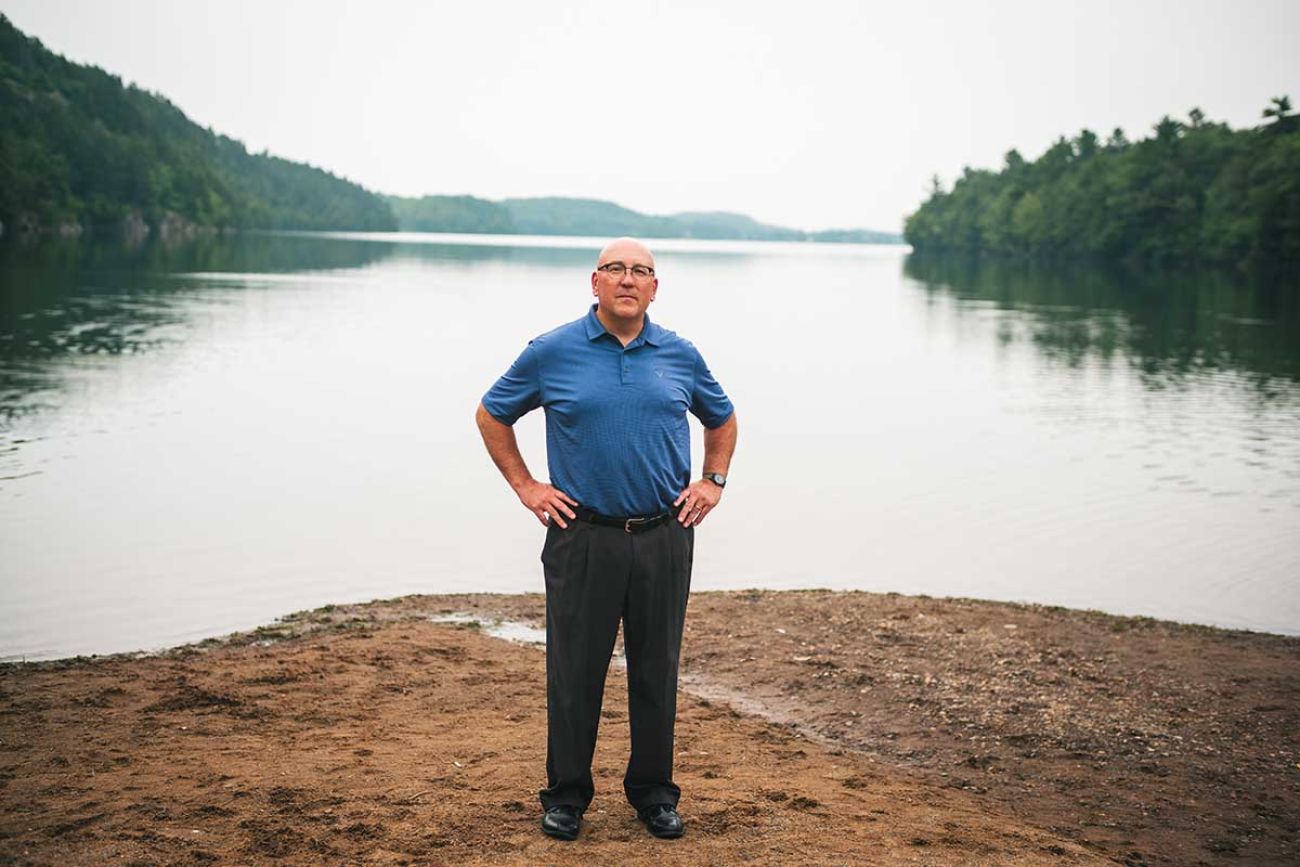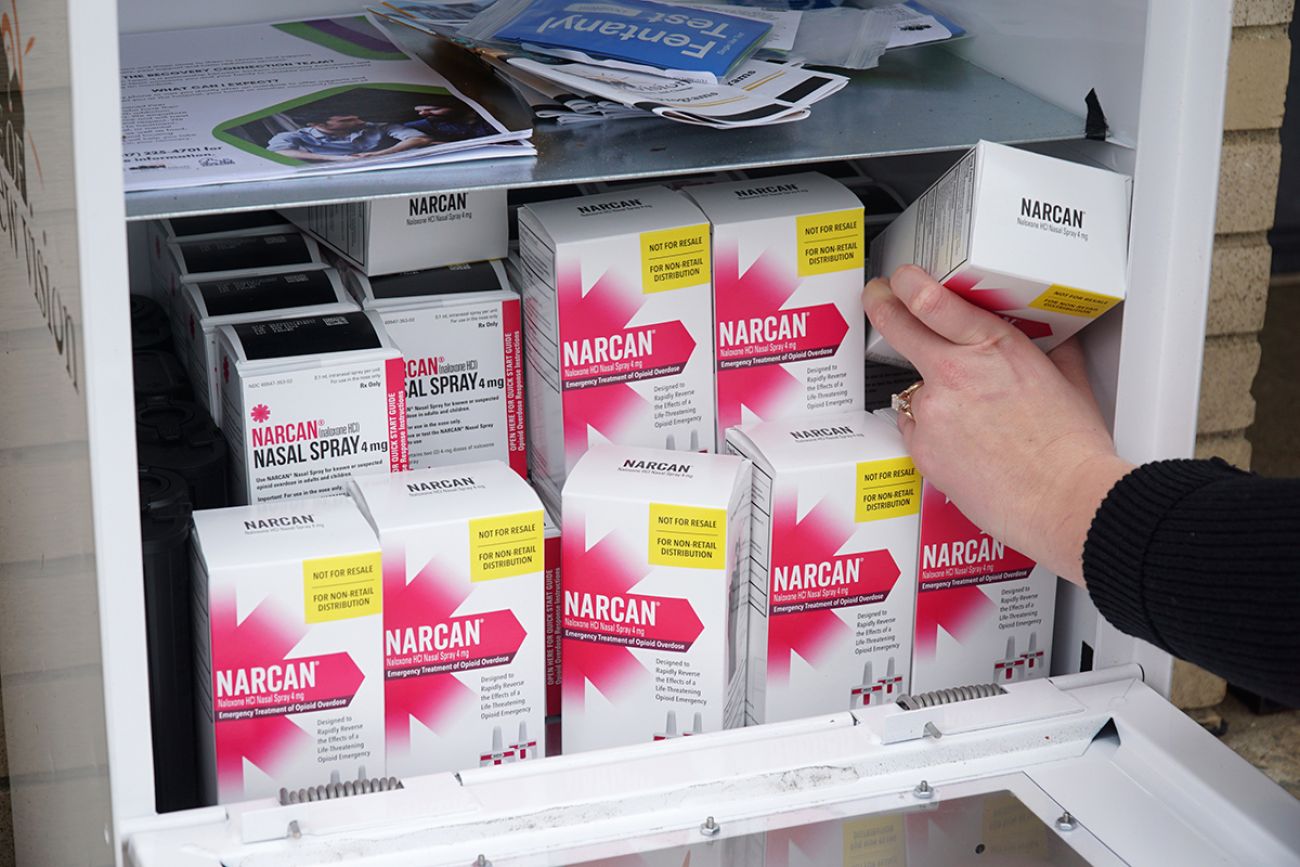In Michigan’s vast UP, finding help for drugs is hard. So is finding solutions

- Drug treatment can be hours away in parts of the Upper Peninsula
- Fifteen counties had planned to pool money to open a centralized crisis clinic, but the plan fell apart
- Because of how Michigan structured its settlement, the state has little oversight in local spending
NEGAUNEE — Born in the Upper Peninsula, Greg Toutant is accustomed to the miles of empty highway lined by pine trees and the occasional pasty shop. He finds beauty in the solitude of the roads he travels between the far-flung outposts of the Great Lakes Recovery Centers.
Along with it, though, is a sobering recognition for a man who has dedicated his life to fighting addiction:
The Upper Peninsula can be an excruciatingly difficult place to find help.
Related:
- After years of opioids agony, rural Michigan finds reason for hope
- Before it even opens, a U.P. addiction clinic has 225 patients
- As crisis rages, Michigan speeds up opioid spending in new budget
“There are treatment deserts,” said Toutant, CEO of the nonprofit that operates 10 outpatient clinics throughout the UP and is the largest drug treatment and recovery organization north of the Mackinac Bridge.
At 16,000 square miles of land, the Upper Peninsula is larger than nine states, like Maryland, but it is home to just 300,000 residents. It’s not uncommon to drive an hour to the closest McDonald’s, so treatment specialists sometimes have to take extreme measures.
Treatment options are limited, so sheriff’s deputies sometimes have to transport residents suffering from substance use disorder to in-patient treatment centers as far away as Dearborn or Kalamazoo, said Houghton County Administrator Ben Larson.
“It’s sometimes eight or nine hours away,” Larson said. “Not only does it tie up (police), but indigent families have no way to visit their relatives.”
Get help
For help with opioid abuse, call the SAMSHA National Hotline, a 24-hour, 365-day-a-year, treatment referral hotline. 1-800-662-HELP (4357)
It’s the sort of problem that advocates hope can be addressed by a once-in-a-lifetime inflow of cash from national lawsuit settlements with pharmacies, opioid manufacturers and distributors deemed to be partly responsible for the explosion of opioids that now kill close to 3,000 Michiganders a year.
Over 18 years, Michigan will receive about $1.6 billion from the settlements. The money, which began arriving in January 2023, is split fairly evenly between the state and local governments across Michigan.
Two UP counties, Luce and Mackinac, trail only Wayne County among the state’s 83 counties in the state’s substance use vulnerability index that factors in overdoses and overdose deaths as well as availability of support.
In three counties (Luce, Ontonogan and Schoolcraft), less than 1 in 10 residents live within 30 miles of addiction help.
Despite the windfall, some of the state’s rural, less populated counties aren’t receiving substantial amounts. In the western UP, Baraga County is projected to receive a total of $497,000 over 18 years, for instance, while nearby Gogebic will get $427,000.
With opioid settlement funds too small to address a region-wide problem, some county leaders proposed pooling their money to open the first crisis stabilization unit north of the Mackinac Bridge.
A crisis stabilization unit provides care for up to 24 hours for those dealing with substance use disorder or mental health issues that pose an immediate danger.
Longer-term care would still often require transport to facilities in the Lower Peninsula, but 24 hours of care could save some of those trips, as well as save lives.
But that plan stalled this spring, with county leaders disagreeing on how to spend the money, and little regional or statewide guidance on how best to collaborate.
“There's ongoing discussions, but the process has just been hampered and slowed down by the massive coordination efforts uniting 15 counties,” Toutant said.
“It's a bit of a mess.”
One of the arguments about the centralized clinic was the sheer size of the UP.
Service providers are “overwhelmed” and short-staffed, but “you would need a helicopter fleet” for users to get help at a centralized clinic, said Kyle Rambo, executive director of the Maquette-based Catholic Social Services.
He also worried that a larger clinic would pull away social workers and addiction specialists from small communities.
The frustrations highlight the difficulty Michigan still faces addressing a statewide crisis, even with tens of millions of dollars flowing every year into the state from opioid lawsuit settlements.
One reason: State and county officials negotiated a deal that gives individual counties virtual total control over spending half of opioid settlement funds, nearly $800 million over 18 years. The state has no authority to mandate spending priorities, and have so far chosen not to incentivize or offer guidance on collaborations.
Marquette County Administrator Scott Erbisch said he supports the regional treatment facility plan, but that some counties “need more information about how the money would be used.
“Right now it’s on pause,” Erbisch said. “We need to regroup.”

‘Not our mandate’
With finite resources from the opioid settlement, regional coalitions are a smart approach to coordinate coverage, said Cara Poland, chairperson of the 12-member Michigan Opioid Advisory Commission, which offers recommendations to the Legislature.
“Having coalitions and collaborations is very helpful,” Poland said. Struggles to coordinate region-wide responses “is exactly the example of the challenges that smaller, rural communities (are) experiencing when they get these opioid dollars.”
But communities are on their own to strike such deals because of how Michigan negotiated its slice of the nationwide opioid settlement, about $50 billion shared between 39 states and Washington, D.C.
Michigan ranks near the bottom of the nation in transparency and accountability over opioid settlement funds, which makes it more difficult to guard against inappropriate or inefficient spending.
Individual states have broad latitude to set their own rules for how funds are distributed, as well as reporting requirements. In Michigan, the state and local governments negotiated a settlement agreement that gives counties nearly half the funds to spend as they feel appropriate to battle the opioid epidemic, as long as they follow broad outlines for prevention, treatment, recovery and education.
In effect, Michigan communities are fighting a statewide problem individually, while other states, such as North Carolina, took a different approach.
There, state officials negotiated an agreement with the state’s 100 counties: local governments would get 85% of all settlement funds flowing into the state. In exchange for the larger share of the pot, counties agreed to exhaustive reporting requirements, annual financial and impact reports and an approval process for spending that flows through the state’s Department of Justice — North Carolina’s version of Michigan’s Attorney General’s office — and the Community Opioid Resource Engine (CORE-NC).
In Colorado, 60% of the expected $750 million coming to the state goes to 19 regional opioid abatement councils created to coordinate spending, fill coverage gaps and avoid redundancies from county to county. Another 20% goes to local jurisdictions, but most of them have turned their money over to the regional committees.
There's little the state can do, said Dr. Natasha Bagdasarian, chief medical executive for the Michigan Department of Health and Human Services.
“We have to abide by the terms that were negotiated in the settlement,” Bagdasarian told Bridge Michigan. “This was a settlement that was negotiated not by me or anyone here at MDHHS. These were settlement terms that were negotiated by the Attorney General’s Office and local government.
“There have been stories, most notably in Bridge, talking about it's a mess and local governments aren't doing this or that, … (asking) ‘why isn’t the state doing (something)?’
“We don't oversee local spending. That is not our charge. That is not our mandate.”
Needed: More of everything
The responsibility instead falls to people like Toutant, whose agency provides services throughout the UP, from a one-staff member outpatient clinic in Ironwood near the Wisconsin border, to recovery housing in St. Ignace 300 miles to the east.
The organization serves more than 2,000 people a year suffering from substance use disorder, with over half of those addictions involving opioids.
Sitting in a treatment center in Negaunee, just west of Marquette, Toutant told Bridge Michigan that the addiction service gaps in the Upper Peninsula are rooted in the region’s sparse population.
“We have a gap in intensive outpatient services because you need a certain number of clients to be involved in group programming,” Toutant said. “And when you get into two very rural communities, you may not have enough (clients) to sustain that.”
A small population means a small hiring pool. “We need more peer coaches, recovery coaches and certified community health workers to really help in underserved communities,” Toutant said.
His agency can’t offer wages high enough to attract or retain workers, Toutant said. “If we offer $25 (an hour) , others (in the private sector such as hospitals) are offering $30 or $35. It’s very difficult as a non-profit to match wages and benefits.”
Toutant would like to see the state use settlement funds to increase treatment reimbursement payments to service providers like his nonprofit, which would allow them to increase pay to attract workers, and expand services.
He’d also like to see county leaders consider collaborations to fight the epidemic.
“The ability to do multi-county pooling of dollars (would) make more regional impact,” Toutant said. “It's good to explore (the idea), especially in the UP.”
See what new members are saying about why they donated to Bridge Michigan:
- “In order for this information to be accurate and unbiased it must be underwritten by its readers, not by special interests.” - Larry S.
- “Not many other media sources report on the topics Bridge does.” - Susan B.
- “Your journalism is outstanding and rare these days.” - Mark S.
If you want to ensure the future of nonpartisan, nonprofit Michigan journalism, please become a member today. You, too, will be asked why you donated and maybe we'll feature your quote next time!





